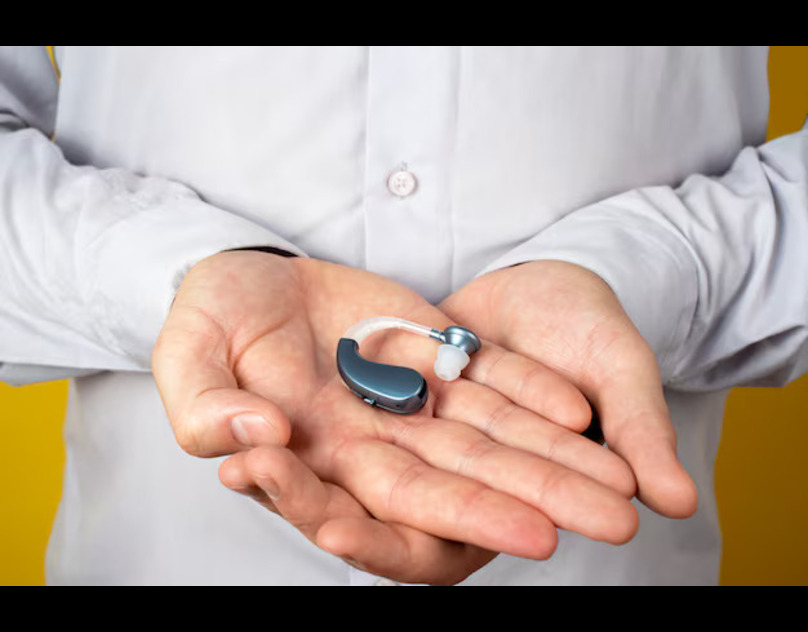
Maintaining your hearing health has never been easier with the innovations in Bluetooth hearing aide, the importance of regular wax guard replacement, and effective earwax prevention techniques. In this blog, we delve into how Bluetooth technology has transformed hearing aids, why wax guard maintenance is essential, and the best practices for preventing earwax buildup to ensure optimal device performance.
Bluetooth Hearing Aids: Seamless Connectivity and Enhanced Sound
Bluetooth hearing aids have revolutionized the hearing experience by offering wireless connectivity to various devices such as smartphones, tablets, and TVs. This allows users to enjoy crystal-clear audio streaming directly to their hearing aids, whether it’s a phone call, music, or a favorite podcast.
Key Benefits of Bluetooth Hearing Aids:
- Improved Sound Quality: Bluetooth technology provides high-fidelity audio that adapts to different environments.
- Personalized Control: Smartphone apps let users adjust volume, settings, and sound modes with ease.
- Hands-Free Convenience: Stream calls and media directly without needing additional accessories.
- Advanced Features: Noise reduction and directional microphones enhance clarity in noisy environments.
With these benefits, Bluetooth hearing aids are perfect for individuals seeking both superior functionality and ease of use.
Hearing Aid Wax Guard Replacement: A Must for Device Maintenance
The wax guard in a hearing aid serves as a barrier against earwax, ensuring that delicate components like the microphone and receiver remain clear and functional. Without proper maintenance, earwax can clog these parts, leading to reduced sound quality or device malfunction.
How to Replace Your Wax Guard:
- Gather Your Tools: Most hearing aid manufacturers provide replacement kits that include wax guards and a tool for removal and installation.
- Remove the Old Wax Guard: Use the provided tool to gently extract the used guard from the hearing aid.
- Insert a New Wax Guard: Align the new guard with the tool and press it into place.
- Check Functionality: Test your hearing aid to ensure it’s working properly after replacement.
Wax guard replacement should be performed every two to four weeks, depending on usage and the amount of earwax produced. Regular maintenance prevents costly repairs and ensures consistent performance.
Earwax Prevention: Essential Care for Your Hearing
Earwax Prevention plays a vital role in protecting the ear canal, but excessive buildup can cause discomfort and hinder hearing aid performance. For hearing aid users, managing earwax is especially important to avoid blockages and maintain device functionality.
Effective Earwax Prevention Tips:
- Practice Gentle Cleaning: Use a soft, damp cloth to clean the outer ear, avoiding the insertion of objects like cotton swabs.
- Use Ear Drops: Over-the-counter ear drops can help soften and remove earwax safely.
- Stay Hydrated: Proper hydration helps maintain the natural balance of earwax production.
- Visit an Audiologist: Regular professional cleaning can prevent excessive buildup and ensure hearing aids function optimally.
- Consider Wax-Resistant Features: Some hearing aids are designed with built-in wax guards or filters for added protection.
By adopting these practices, you can minimize earwax-related issues and keep your hearing aids in peak condition.
Comprehensive Hearing Aid Care: Tips for Longevity
In addition to Bluetooth functionality and wax guard maintenance, proper overall care ensures your hearing aids perform at their best for years to come.
Best Practices for Hearing Aid Maintenance:
- Daily Cleaning: Wipe down your hearing aids with a soft, dry cloth to remove moisture, dirt, and wax.
- Proper Storage: Store your devices in a clean, dry case when not in use. Consider using a dehumidifier for added protection.
- Replace Batteries Promptly: Ensure your hearing aids have sufficient power by regularly checking and replacing batteries.
- Regular Professional Checkups: Schedule periodic visits to an audiologist for thorough inspections and professional cleaning.
- Protect Against Moisture: Avoid exposure to water and humid environments, which can damage the internal components of your hearing aids.
These steps not only prolong the life of your hearing aids but also ensure they continue delivering clear, consistent sound.
The Role of Technology in Modern Hearing Solutions
The introduction of Bluetooth technology has transformed hearing aids from simple amplification devices to sophisticated tools for managing hearing loss. Whether it’s streaming audio directly from your phone, customizing settings via an app, or connecting to smart home systems, Bluetooth hearing aids offer unparalleled convenience and functionality.
When combined with routine wax guard replacement and effective earwax prevention, these innovations make hearing aids more accessible and user-friendly than ever. By integrating modern technology with diligent care, you can enjoy improved hearing and a better quality of life.
Conclusion
Bluetooth hearing aids, hearing aid wax guard replacement, and earwax prevention form the cornerstone of effective hearing care. With the right tools and techniques, you can maximize the performance and longevity of your hearing aids while enjoying the benefits of modern technology. From superior sound quality and seamless connectivity to simplified maintenance routines, today’s hearing aids are designed to empower users and enhance their daily lives.





Leave a Reply